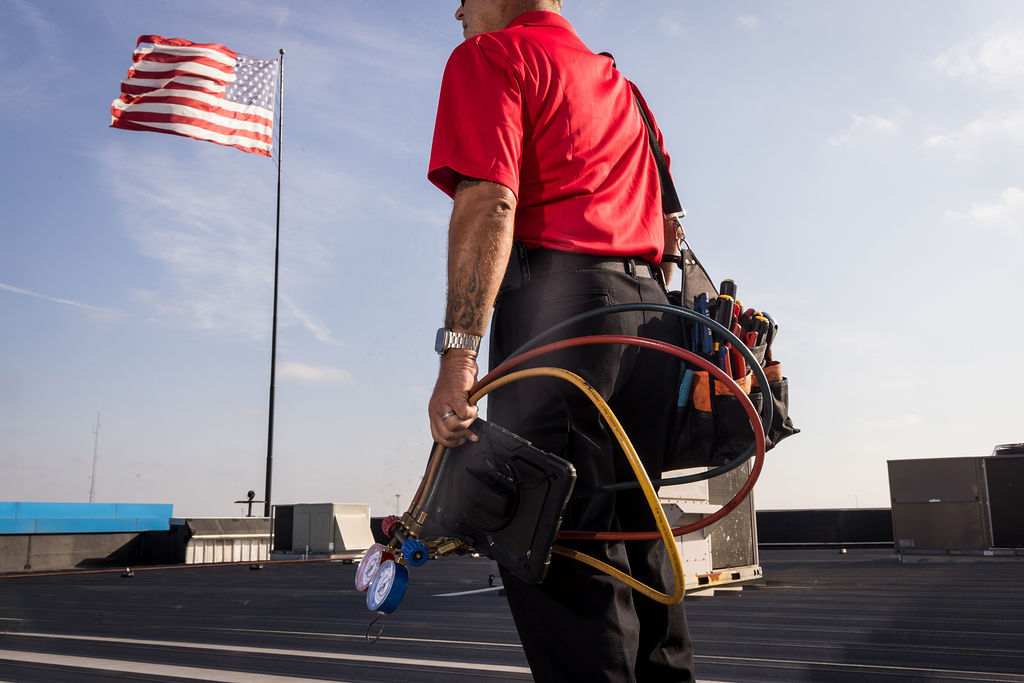
The air you breathe in your home affects health, comfort, and quality of life. Allergy symptoms, respiratory issues, or unexplained discomfort can be signs of issues with indoor air quality (IAQ).
Americans spend around 90% of their time indoors, air can be 2–5x more polluted than outdoor air.
Improving indoor air quality can be simple, requiring an understanding of the basics of filters, humidifiers, dehumidifiers, and other air-quality solutions for breathing easier and living healthier.
Without proper ventilation and filtration, contaminants circulate through living spaces.
Children, elderly family members, and anyone with respiratory conditions are especially vulnerable to air-quality issues.
Air filters defend against airborne contaminants. As the HVAC system runs, air passes through the filter to capture particles before these have the chance to circulate throughout the home.
Standard fiberglass filters are often the cheapest option and only catch large particles like dust and lint. These are good at protecting HVAC equipment but do not help air quality.
Pleated filters offer better performance by capturing smaller particles like pollen, mold spores, pet dander, and more.
For superior air quality, consider MERV-rated filters. MERV (Minimum Efficiency Reporting Value) ratings range from 1 to 16, with higher numbers signalling finer filtration. MERV 8–11 are good for most homes, capturing common allergens without excessively restricting airflow.
Filters need regular replacement. Clogged filters can't effectively trap new contaminants and forces the HVAC system to work harder. That increases energy bills and reduces system lifespan.
You can clean air filters yourself to extend the lifespan, but usually after half a year you should change the air filter. We recommend regularly checking the air filter and holding it up to light to check its state; if light is not visible on the other side of the filter, then it is time to change it.
Air-purification systems can integrate with HVAC equipment to eliminate contaminants.
Electronic air cleaners catch very-small particles that slip through standard filters. These also have the convenience of washable collection plates, so you don't need to pay for replacement filters.
UV germicidal lights are not air filters per se but instead kill biological contaminants like mold, bacteria, and viruses. These lights can prevent mold growth on cooling coils.
Humidity levels affect air quality. The ideal indoor humidity range is 30–50%. Since many homes fall outside this zone, especially during extreme seasons, humidity control can be helpful.
Filtration and humidity control can only go so far, as you still need fresh-air circulation. Modern homes are tightly built for energy efficiency, which is useful for saving on heating and cooling costs but can trap stale air and contaminants.
Energy recovery ventilators (ERVs) and heat recovery ventilators (HRVs) solve this problem by bringing in fresh outdoor air while exhausting stale indoor air. The clever part: these systems transfer heat and humidity between the outgoing and incoming air streams, minimizing energy loss. You get fresh air without dramatically increasing heating or cooling costs.
Ventilation systems are essential for good indoor air quality, but are especially vital in homes with gas appliances that can produce combustion byproducts. Likewise, good ventilation systems are highly beneficial in homes with high occupancy, where carbon-dioxide levels can rise without adequate air exchange.